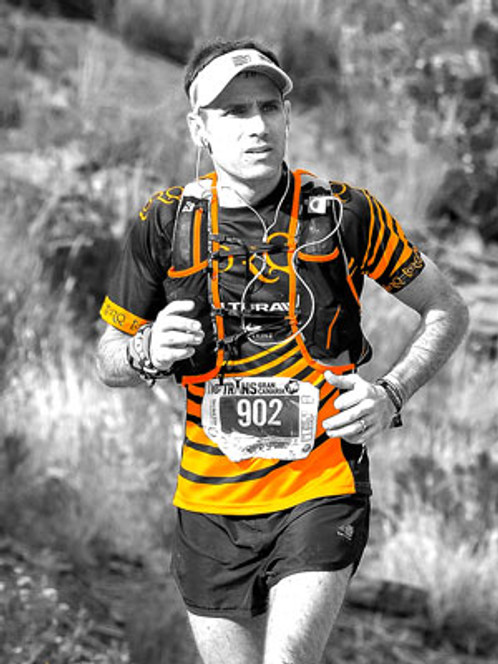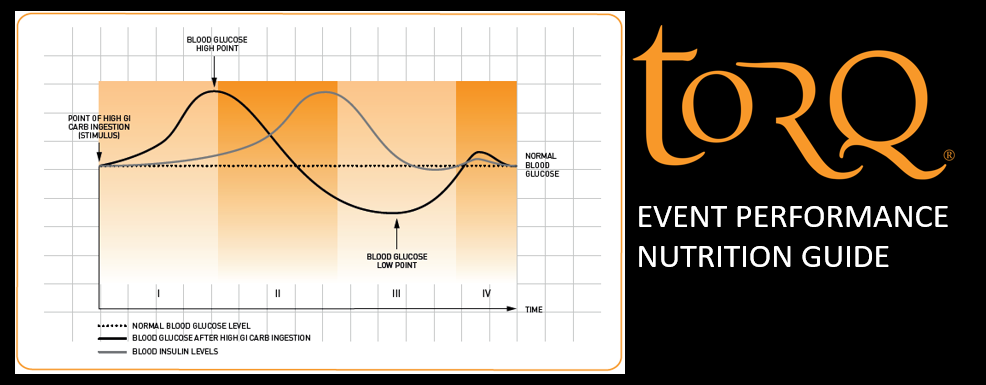TORQ and Mountain Goat Adventures Trail Run Series want to make sure that you are ready for the upcoming spring trail races. With the kick-off to the spring trail season approaching, we thought it best to list down a few key resources to help you build your understanding, and practice, for proper endurance fueling to deliver performance when it counts on the trails!
Lets cover the basics here...
Key Point 1: Trail running is hard. You will need fuel. Here's why...
Note that the longer the duration of the training/race, the more important it is to maintain a supply of carbohydrates to your working muscles. For races such as the Mountain Goat Spring Thaw at Rope Mill (GA), there are options for both 4mi and 10mi courses.
A 4 mile course, although challenging, can be approached more aggressively when it comes to total performance. Your body, when properly rested and recovered from prior training, stores roughly 500g of glycogen (stored carbohydrate in your liver and muscles). This may sound like a lot, but it goes quickly, supplying the body with high-performance fuel for only 60-120 minutes depending on exertion of the athlete. If your body has glycogen topped up (from a well balanced diet, and good dinner and pre-race breakfast), you should be able to maintain adequate endurance for the course. But don't worry if you're on edge or maybe fatigued, we have aid on-course as well!).
A 10 mile trail course will challenge even the most trained athlete, where in-race fueling is critical. As stated above, 'hitting the wall' (or bonking in cycling terms) can come as early as 60mins of intensive running off-road. The number 1 mistake we see even trained athletes make is to delay fueling and hydration until the point when they 'feel' they need it (typically beyond an hour into a race). At this point, you have already dug yourself in a hole you wont be able to recover from, and your performance will be affected.
As you can never quite take in (and digest) enough fuel to recoup what you are burning in these conditions, we recommend to all athletes to base fueling intake by the clock. For a high performance runner, consuming a TORQ gel every twenty minutes (or at least each time you pass the aid station) will help keep carbohydrate supplied to working muscles while slowing depletion of your precious (and limited) glycogen stores. TORQ gels benefit you with both carbohydrates and electrolytes, while not requiring water to 'wash down' while in stride.
For hydration, which is sometimes harder to plan on a run-course, a splash of sport drink (carbohydrate and electrolytes) should be done at each aid-station pass (even if you feel fine, grab a cup and top up, your engine will thank you). TORQ Energy sports drink and TORQ gels will be at Mountain Goat Adventure trail run races, where both have vital carbohydrate and electrolytes - and we will let the flavors speak for themselves!
To really follow a complete fueling and hydration strategy, watch this video on the TORQ Fueling System outlining how, and what to do come race day (and training days!).
Key Point 2: What you do leading up to the race WILL affect your performance.
Note that your glycogen stores should be nearly fully loaded by the time you wake up, but you will have lost some of your liver glycogen during your overnight fast. This can easily be topped up with a moderately high carbohydrate breakfast. Ordinarily, for 1-day events like a sub-4hr trail run, or bike race, regular instant oatmeal or breakfast cereal with some coffee and banana will work just fine! Notice this is breakfast which is higher in carbohydrate, easy to digest, and low in fat.
Fat is the enemy first thing in the morning and the hours before you compete. Prior to, during, or immediately after exercise are not the right times to consume fat. Fat blocks the absorption of carbohydrate due to its slow passage through the digestive system. So, your breakfast, and any pre-race snack should be carbohydrate focused, without fats (and too much protein), thus able to be absorbed quickly and efficiently, leaving your digestive system clean and ready to accept the during-event fueling you’re going to throw at it.
Speaking of throwing things at it...Carbohydrate loading ('Carb-loading') isn’t necessarily the appropriate course of action for 1-day events, and this probably forms the number 2 mistake many athletes make. For multi-day stage runs/rides, there is a place for this (which we will have an article soon!) but heavy carb-loaded meals the night before and morning of an event can leave your legs feeling heavy and a bit ‘sparkless’ due to the water required to store carbohydrates. Many people attack a big bowl of pasta the night before, which is fine, but be careful of what goes on top (heavy oils, fats, and over indulgence of proteins). Our advice, if you are not running/riding >4hrs, stick to a regular, clean meal plan and avoid the heavy pastas and starches (and fats!) the night before. Again, click on our Event Performance Nutrition Guide above for suggestions.
Our recommendations are simple for a 4 or 10mi trail race:
- Night before: Get good rest, drink water, and avoid alcohol (or stick to a glass of red, or a single beer).
- Morning of: simple breakfast routine. We like oatmeal with a banana, coffee, and water. Eat 2-3hrs before the race if you can.
- Race Start: Drink water leading up to the event. Keep coffee intake to 1-2cups (too much caffeine, above ~300mg becomes diuretic). If needed, consume 1 energy gel 5 minutes before the race. 4mi racers should not need this if breakfast was consumed. (be sure to ask the TORQ team at the events what they like for breakfast!).
- During Race: consume 1 TORQ Energy gel every 30 minutes (this will bring you to 60g carbohydrate/hr). Compliment with fluid intake from each aid-station pass.
Key Point 3: If you plan to push yourself, you will sweat. Here is how to hydrate correctly!
When training/racing, consumption of a carbohydrate (glucose) based sports drink will hydrate you faster than water alone, and even water + electrolyte tablet. This is due to the glucose literally pulling water and sodium molecules through the stomach via 'facilitated transport'.
The video below communicates the essential facts about the role of glucose in the hydration process, so please take the time to watch it – it only lasts about 1 minute.
It’s a little-known fact that carbohydrate-free electrolyte tablets do not contain glucose and will therefore not hydrate you as rapidly and comprehensively as a product containing glucose, which is why TORQ don’t have such a product in their portfolio. As an analogy, trying to run strictly on electrolyte tablets would be like trying to pump spark-plugs alone into a race car for a 500lap race...where's the fuel?
So, come race day, eat a clean breakfast high in carbohydrate, low in fat. Plan to set your fueling by your watch come race time, and don't forget to top-up your carbohydrate supplies at each aid station. Become #UNBOKABLE.
As always, the TORQ team is happy to answer any questions you may have regarding your nutrition for training and race day. Reach out to us at info@torqusa.com, or find us at TORQUSA on fb and insta! Show us some insta pictures with our products and get a prize!
Enjoy, and happy trails,
TORQ Team


